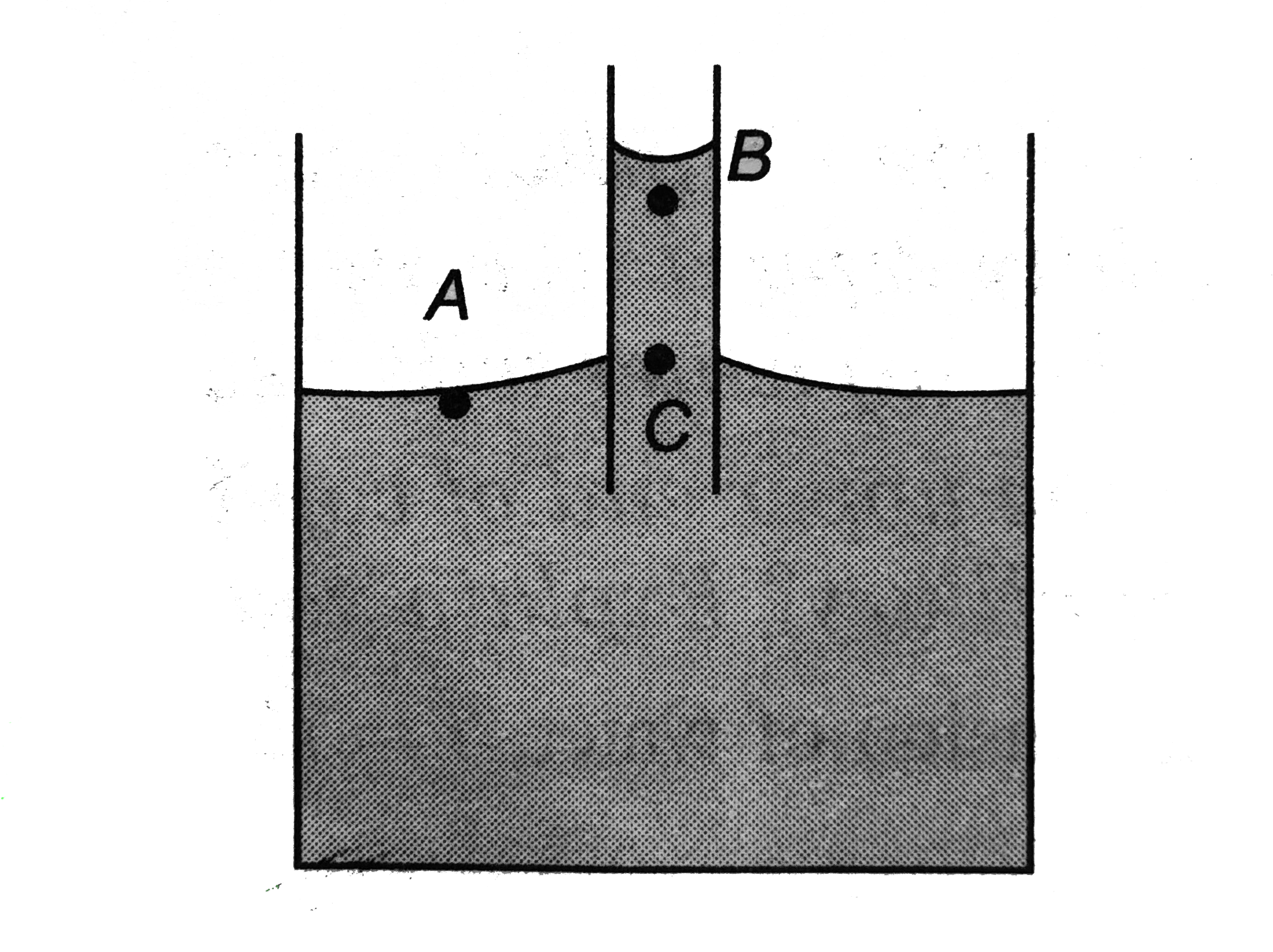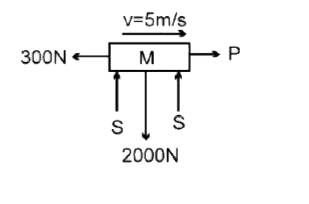An object of uniform density is allowed to float in water kept in a beaker. The object has triangular cross-section as shown in the figure. If the water pressure measured at the three points A, B and C below the object are PA,PB and PC respectively. Then

PA>PB>PC
PA>PB<PC
PA=PB=PC
PA=PC<PB
The correct Answer is:C
Step by step video, text & image solution for An object of uniform density is allowed to float in water kept in a beaker. The object has triangular cross-section as shown in the figure. If the water pressure measured at the three points A, B and C below the object are P_(A), P_(B) " and " P_(C ) respectively. Then by Physics experts to help you in doubts & scoring excellent marks in Class 11 exams.
Updated on:21/07/2023Topper's Solved these Questions
- MECHANICAL PROPERTIES OF FLUIDSBOOK - NARAYNACHAPTER - MECHANICAL PROPERTIES OF FLUIDSEXERCISE - C.U.Q (EQUATION OF CONTINUITY, BERNOULLI.S THEOREM)
25 Videos
- MECHANICAL PROPERTIES OF FLUIDSBOOK - NARAYNACHAPTER - MECHANICAL PROPERTIES OF FLUIDSEXERCISE - C.U.Q (TORRICELLI.S THEOREM AND VISCOSITY)
29 Videos
- MECHANICAL PROPERTIES OF FLUIDSBOOK - NARAYNACHAPTER - MECHANICAL PROPERTIES OF FLUIDSEXERCISE - EVALUATE YOURSELF - 12
3 Videos
- MATHEMATICAL REVIEW & PHYSICAL WORLDBOOK - NARAYNACHAPTER - MATHEMATICAL REVIEW & PHYSICAL WORLDEXERCISE - C.U.Q
13 Videos
- MECHANICAL PROPERTIES OF SOLIDSBOOK - NARAYNACHAPTER - MECHANICAL PROPERTIES OF SOLIDSEXERCISE - LEVEL-II (H.W)
24 Videos
Similar Questions
Figure shows a siphon. The liquid shown in water. The pressure difference PB−PA between the points A and B is

View SolutionThe graph of an object’s motion (along the x-axis) is shown in the figure.The instantaneous velocity of the object at points A and B arevA and vB respectively. Then

View Solution
Knowledge Check
A wooden object floats in water kept in as beaker. The object is near a side of the beaker figure. Let P1,P2,P3 be the pressure at the three points A,B and C of the bottom as shown in the figure.
 AP1=P2=P3BP1<P2<P3CP1>P2>P3DP2=P3=P1
AP1=P2=P3BP1<P2<P3CP1>P2>P3DP2=P3=P1A capillary tube is dipped in a liquid. Let pressure at point A,B and C be pApB and pC respectively, then
 ApA=pB=pCBpA=pB<pCCpA=pC<pBDpA=pC>pB
ApA=pB=pCBpA=pB<pCCpA=pC<pBDpA=pC>pBIn the following figure, if the coordinates of P are (a,b,c) then the coordinates of A,B and C are respectively
A(a,0,0),(b,0,0),(c,0,0)B(a,0,0),(0,b,0),(0,0,c)C(0,0,a),(0,b,0),(c,0,0)D(a,b,c),(b,c,a),(c,a,b)
The forces acting on an object are shown in the figure. If the body moves horizontally at a constant speed of 5m/s, then the values of the forces P and S are, respectively-

View SolutionWater is flowing through a channel (lying in a vertical plane) as shown in the figure. Three sections A, B and C are shown. Sections B and Chave equal area of cross section. If PA,PAandPC are the pressures at A, Sand C respectively then

View SolutionThree vessels A,B,and C of different shapes contain a water upto the same height as shown in the figure .PA,PB ,and PC be the pressure exerted by the water at the bottom of the vessels A ,B and C respectively . Then

View SolutionThree vessels A, B and C of different shapes contain water upto the same height in the figure. PA,PBandPC be the pressure exerted by the water at the bottom of the vessels A, B and C respectively. Then

View SolutionWater flows through a frictionless duct with a cross-section varying as shown in fig. Pressure P at points along the axis is represented by

View Solution
